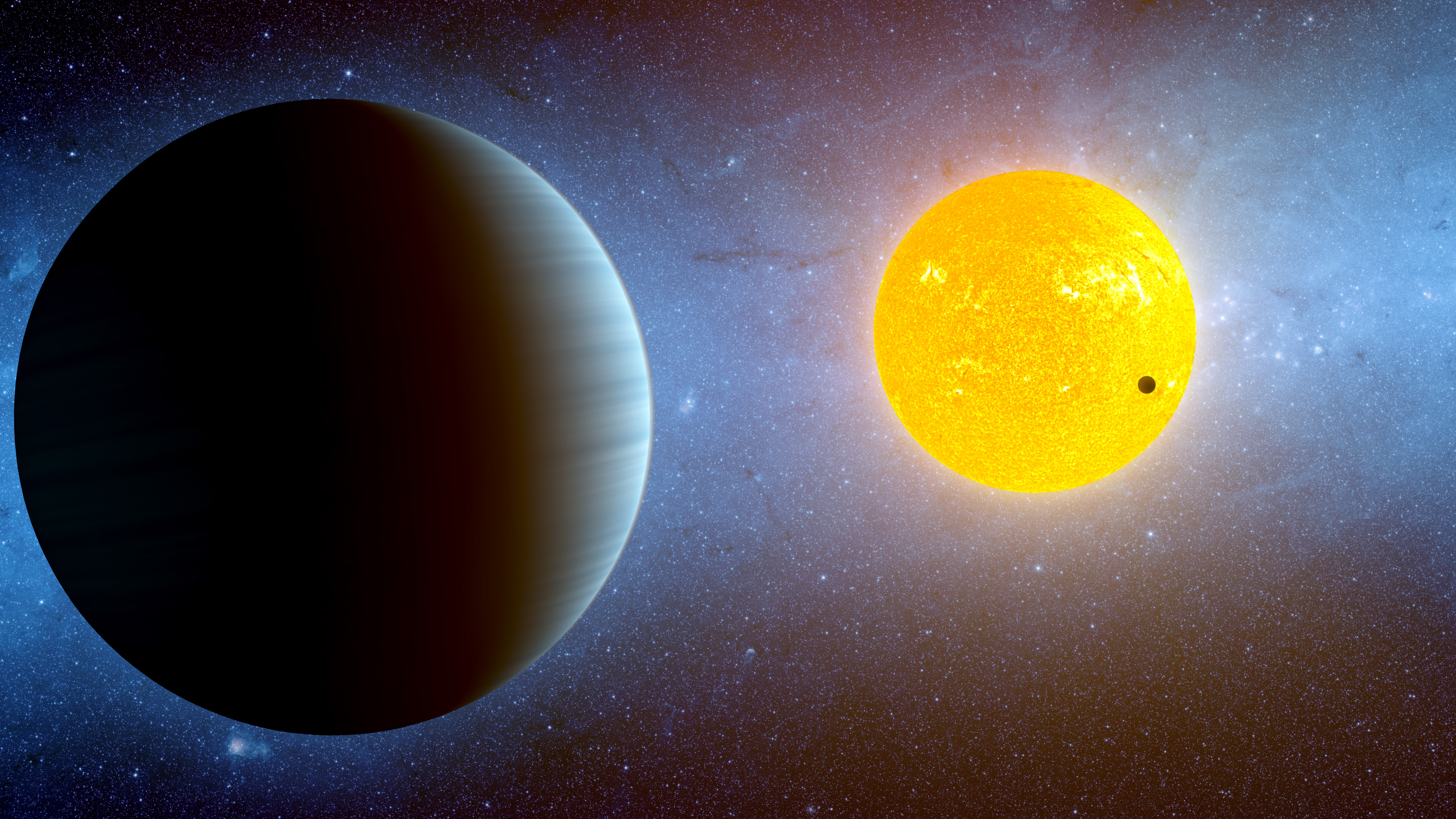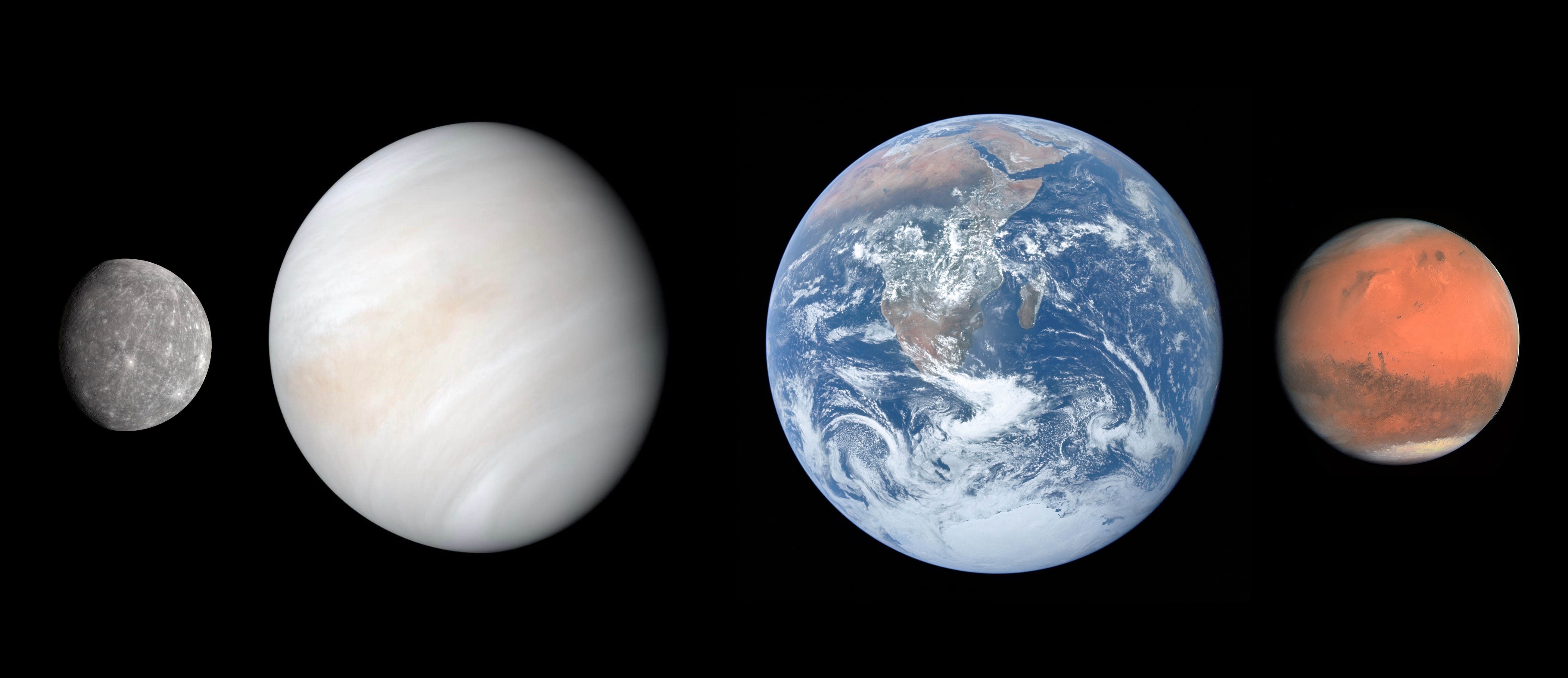|
Kepler-10b
Kepler-10b is the first confirmed terrestrial planet to have been discovered outside the Solar System by the Kepler Space Telescope. Discovered after several months of data collection during the course of the NASA-directed Kepler Mission, which aims to discover Earth-like planets crossing in front of their host stars, the planet's discovery was announced on January 10, 2011. Kepler-10b has a mass of 3.72±0.42 Earth masses and a radius of 1.47 Earth radii. However, it lies extremely close to its star, Kepler-10, and as a result is too hot to support life as we know it. Its existence was confirmed using measurements from the W.M. Keck Observatory in Hawaii. Nomenclature and history Kepler-10, the star that hosts Kepler-10b, is located 560 light-years from the Solar System in the Draco constellation. It is approximately the same size as the Sun, with an estimated age of 12 billion years. Planet Kepler-10b was the first planet to be discovered in the orbit of its star. For ... [...More Info...] [...Related Items...] OR: [Wikipedia] [Google] [Baidu] |
Kepler-10
Kepler-10, formerly known as KOI-72, is a Sun-like star in the constellation of Draco (constellation), Draco that lies 187 parsecs (608 light years) from Earth. Kepler-10 was targeted by NASA's Kepler (spacecraft), Kepler spacecraft, as it was seen as the first star identified by the Kepler mission that could be a possible host to a small, transiting exoplanet. The star is slightly less massive, slightly larger, and slightly cooler than the Sun; at an estimated 10.4 billion years in age, Kepler-10 is almost 2.6 times the age of the Sun. Kepler-10 is host to a planetary system made up of at least two planets. Kepler-10b, the first undeniably rocky planet, was discovered in its orbit after eight months of observation and announced on January 10, 2011. The planet orbits its star closely, completing an orbit every 0.8 days, and has a density similar to that of iron. The second planet, Kepler-10c, was confirmed on May 23, 2011, based on follow-up observations by the Spitzer S ... [...More Info...] [...Related Items...] OR: [Wikipedia] [Google] [Baidu] |
Kepler-10c
Kepler-10c is an exoplanet orbiting the G-type star Kepler-10, located around 608 light-years away in Draco. Its discovery was announced by Kepler in May 2011, although it had been seen as a planetary candidate since January 2011, when Kepler-10b was discovered. The team confirmed the observation using data from NASA's Spitzer Space Telescope and a technique called BLENDER that ruled out most false positives. Kepler-10c was the third transiting planet to be confirmed statistically (based on probability rather than actual observation), after Kepler-9d and Kepler-11g. The Kepler team considers the statistical method that led to the discovery of Kepler-10c as what will be necessary to confirm many planets in Kepler's field of view. Kepler-10c orbits its host star every forty-five days at a quarter of the average distance between the Sun and Earth. Initial observations showed that it has a radius more than double that of Earth, and suggested a higher density, suggesting a mainly r ... [...More Info...] [...Related Items...] OR: [Wikipedia] [Google] [Baidu] |
CoRoT-7b
CoRoT-7b (previously named CoRoT-Exo-7b) is an exoplanet orbiting the star CoRoT-7 in the constellation of Monoceros (constellation), Monoceros, from Earth. It was first detected Methods of detecting extrasolar planets#Transit photometry, photometrically by the French-led CoRoT mission and reported in February 2009. Until the announcement of Kepler-10b in January 2011, it was the smallest exoplanet to have its diameter measured, at 1.58 times that of the Earth (which would give it a volume 3.95 times Earth's) and the first potential extrasolar terrestrial planet to be found. The exoplanet has a very short orbital period, revolving around its host star in about 20 hours. Combination of the planet's diameter derived from transit data with the planet's mass derived from radial velocity measurements means that the density of CoRoT-7b is about the same as that of Earth; therefore, CoRoT-7b is a terrestrial planet like Earth and not a gas giant like Jupiter. The radial velocity observat ... [...More Info...] [...Related Items...] OR: [Wikipedia] [Google] [Baidu] |
Terrestrial Planet
A terrestrial planet, telluric planet, or rocky planet, is a planet that is composed primarily of silicate rocks or metals. Within the Solar System, the terrestrial planets accepted by the IAU are the inner planets closest to the Sun: Mercury, Venus, Earth and Mars. Among astronomers who use the geophysical definition of a planet, two or three planetary-mass satellites – Earth's Moon, Io, and sometimes Europa – may also be considered terrestrial planets; and so may be the rocky protoplanet-asteroids Pallas and Vesta.Emily Lakdawalla et al.What Is A Planet?The Planetary Society, 21 April 2020 The terms "terrestrial planet" and "telluric planet" are derived from Latin words for Earth (''Terra'' and ''Tellus''), as these planets are, in terms of structure, ''Earth-like''. Terrestrial planets are generally studied by geologists, astronomers, and geophysicists. Terrestrial planets have a solid planetary surface, making them substantially different from the larger gaseous plane ... [...More Info...] [...Related Items...] OR: [Wikipedia] [Google] [Baidu] |
Lava-ocean Planet
A lava planet is a type of terrestrial planet, with a surface mostly or entirely covered by molten lava. Situations where such planets could exist include a young terrestrial planet just after its formation, a planet that has recently suffered a large collision event, or a planet orbiting very close to its star, causing intense irradiation and tidal forces. Factors and characteristics Lava planets would probably orbit extremely close to their parent star. In planets with eccentric orbits, the gravity from the nearby star would distort the planet periodically, with the resulting friction producing internal heat. This tidal heating could melt rocks into magma, which would then erupt through volcanoes. This would be similar to the Solar System moon Io, orbiting close to its parent Jupiter. Io is the most geologically active world in the Solar System, with hundreds of volcanic centres and extensive lava flows. Lava worlds orbiting extremely closely to the parent star may possibly ... [...More Info...] [...Related Items...] OR: [Wikipedia] [Google] [Baidu] |
Kepler-4b Kepler-4b, initially known as KOI 7.01, is an extrasolar planet first detected as a transit by the Kepler spacecraft The Kepler space telescope is a disused space telescope launched by NASA in 2009 to discover Earth-sized planets orbiting other stars. Named after astronomer Johannes Kepler, the spacecraft was launched into an Earth-traili |


.jpg)


